Results
-
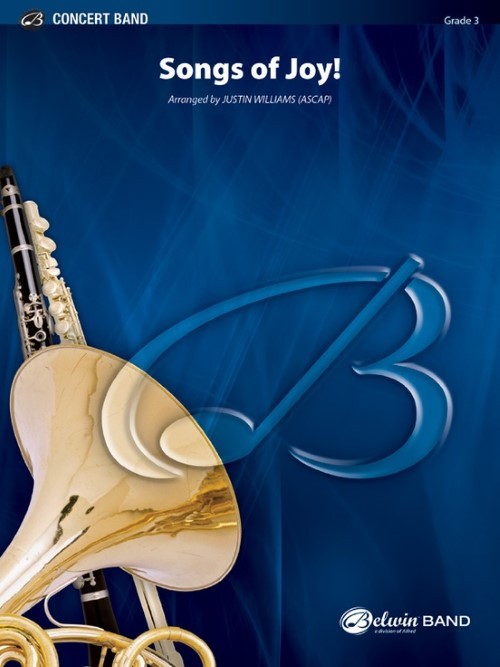 £66.95
£66.95Songs of Joy! (Concert Band - Score and Parts) - Williams, Justin
Timeless and beloved, "Jesu, Joy of Man's Desiring" and the "Choral Finale" from Beethoven's Ninth Symphony are brought to your concert ensemble like you've never heard before in a new and exciting arrangement. Suitable for any occasion, this work incorporates Celtic, pop, and rock styles interwoven with catchy riffs and contemporary harmonies for a refreshing and fun experience for your audience and ensemble!Duration: 3:30
Estimated dispatch 7-14 working days
-
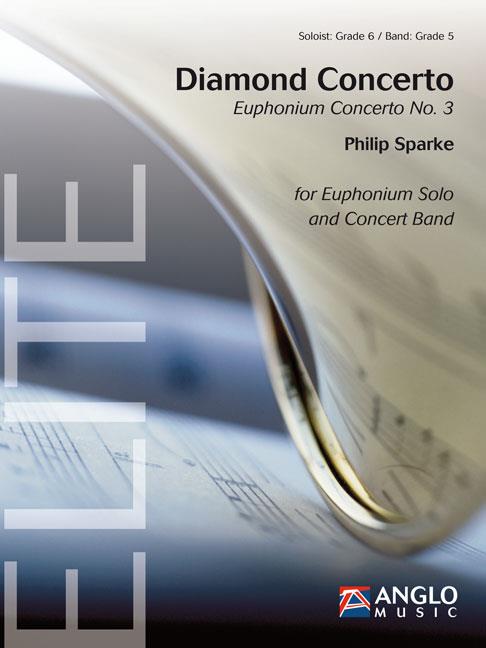 £209.99
£209.99Diamond Concerto (Euphonium Concerto No.3) (Euphonium Solo with Concert Band - Score and Parts) - Sparke, Philip
Diamond Concerto was commissioned by Musikverein Morschied from Germany - Dr. Eric Grandjean, conductor - for a special concert featuring Steven Mead as guest soloist. Together they gave the world premiere on 28th April 2012 in the town theatre of Idar-Oberstein. The commission is a highlight in the 30-year friendship between composer and soloist, which has included many mutual CD projects and concerts and, now, a concerto. Sparke had Steven Mead's special euphonium sound in his head throughout the composition process and made free use of the variety of styles which the world-renowned virtuoso has made his own during his highly successful solo career.The village of Morschied lies to the west of Frankfurt am Main in the area known as the German Road of Precious Stones, which is famous for its thriving gem industry. Because of this it was decided to give the commission a local connection by choosing the title, Diamond Concerto. Each of the three movements is named after a famous diamond:Earth Star is rather stern in mood, opening with a free fantasy for the soloist over a static chord from the band. This leads to an Allegro Moderato in minor mode where small motives are gradually repeated and developed by both band and soloist.Ocean Dream uses a varied quote from the composer's Music for Battle Creek, including a melting slow melody that was originally written with Steven Mead in mind.Blue Heart was written, at Steven Mead's suggestion, in bebop style and takes the form of a jazz waltz. The quasi-improvisatory central section features a call-and-response passage for the soloist and upper woodwinds.Duration: 15:45
Estimated dispatch 7-14 working days
-
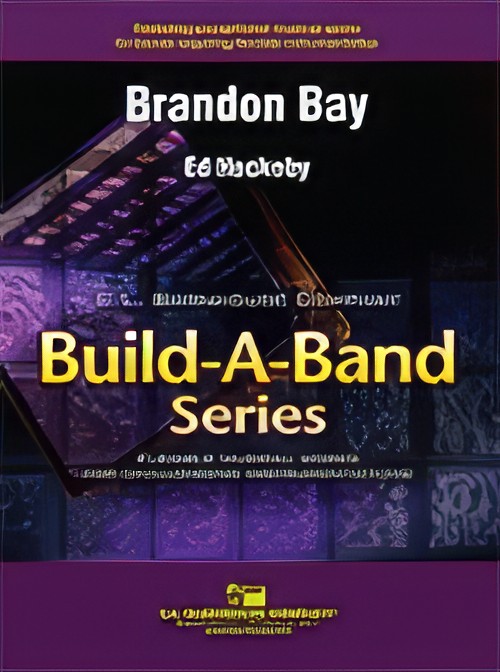 £60.00
£60.00Brandon Bay (Flexible Ensemble- Score and Parts) - Huckeby, Ed
An outstanding composition by Ed Huckeby that features rhythmic accompaniment rhythms in the third and fourth parts contrasted with simple, but musically effective first and second part melodic lines. The slower middle section features a haunting melody in 3/4 time and is an excellent teaching tool for the legato style. Ed's arrangement for the Build-A-Band Series makes it playable with very small bands and bands with severe instrumentation issues and insures that it will be a favourite concert and contest selection for years to come for these groups. As usual with this series, optional parts are included for Percussion and piano.
Estimated dispatch 7-14 working days
-
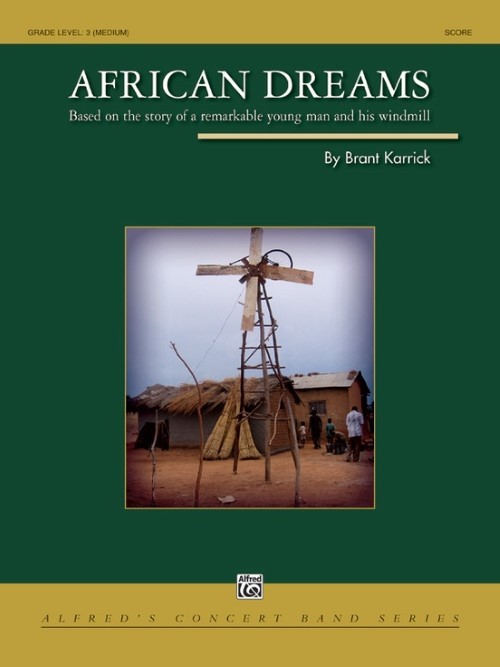 £82.95
£82.95African Dreams (Concert Band - Score and Parts) - Karrick, Brant
William Kamkwamba was raised in Malawi, an African country where magical thoughts prevailed but modern technology was a mystery. From books he read, young William imagined building a windmill that might, one day, bring electricity and water to his village and drastically change the lives of his neighbors. Hoping to someday study science, his country was debilitated by famine that forced William to drop out of school and forage for food as thousands throughout the country died of starvation. However, William's passion remained indefatigable and, using scrap metal, tractor parts, and bicycle halves, he ingeniously built a crude yet operable windmill that powered four lights and his radio. News of William's achievement soon spread beyond his country's borders, and the young boy who was once thought of as crazy became a hero to many around the world. Duration: 6.00
Estimated dispatch 7-14 working days
-
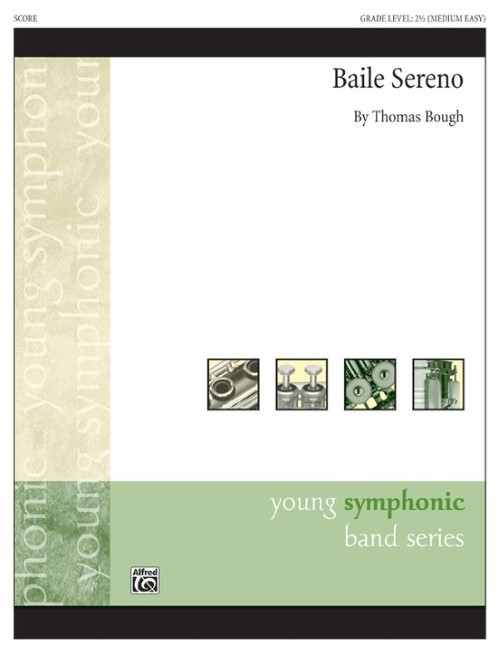 £53.95
£53.95Baile Sereno (Concert Band - Score and Parts) - Bough, Thomas
Beginning as a stately Latin dance which builds into a vibrant celebration, all performers get involved and set the mood by combining foot taps and clapping to produce a memorable start to this piece. Carefully notated percussion parts contribute authentic sounds and provide students an opportunity to play congas, bongos, and timbales using traditional notation. Performers and audiences alike will enjoy the multicultural content and the emotional rise and fall of this engaging composition.Duration: 3.00
Estimated dispatch 7-14 working days
-
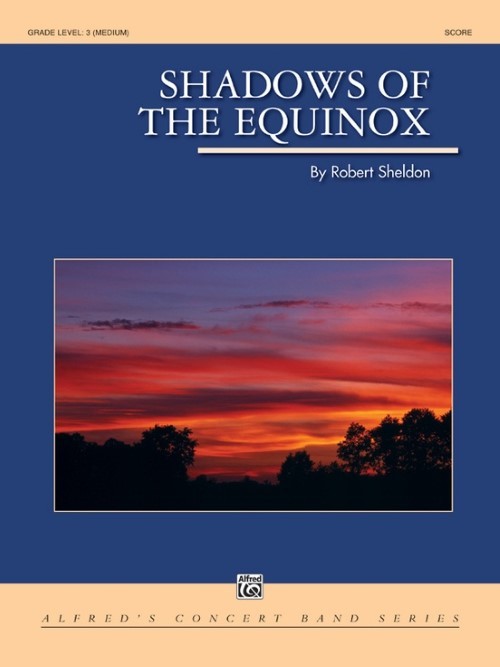 £62.95
£62.95Shadows of the Equinox (Concert Band - Score and Parts) - Sheldon, Robert
As summer ends, the chill of the autumn air awakens feelings within us. The shadows are longer in late afternoon and darkness comes early. The trees are losing their leaves and their gnarled trunks and branches take on sinister profiles against the looming twilight. We shudder at the cold wind. Our pulse quickens and we suddenly want to return to the safety and warmth of home. Night falls and we are once again at peace. We say a final farewell to the carefree days of summer and accept the relentless march of the seasons. Winter will soon be here. Duration: 5.30
Estimated dispatch 7-14 working days
-
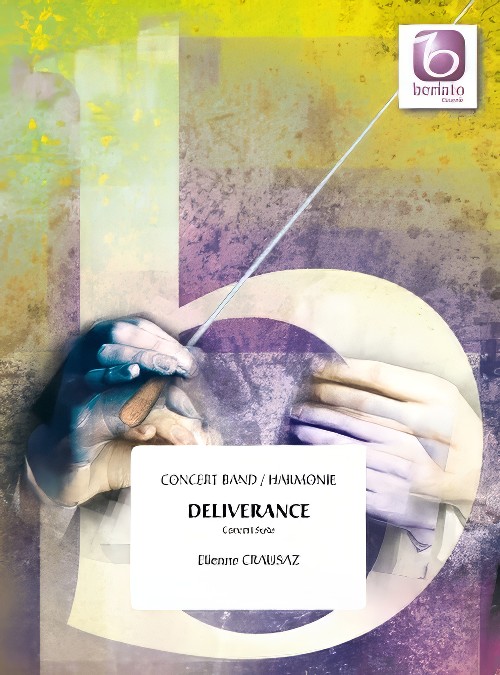 £159.99
£159.99Deliverance (Concert Band - Score and Parts) - Crausaz, Etienne
Deliverance is an exciting concert suite by Etienne Crausaz. The first movement is in the style of a siciliana, starting out quiet and calmly, then slowly building in excitement and energy. The second movement, a scherzo, allows for colourful sounds and timbres and is full of humorous musical elements and contrasts. The third movement, the vivace, presents a dialogue between the higher and lower registers of the band with plenty of time changes. Deliverance is an action-packed composition, full of colour and contrast.Duration: 11.00
Estimated dispatch 7-14 working days
-
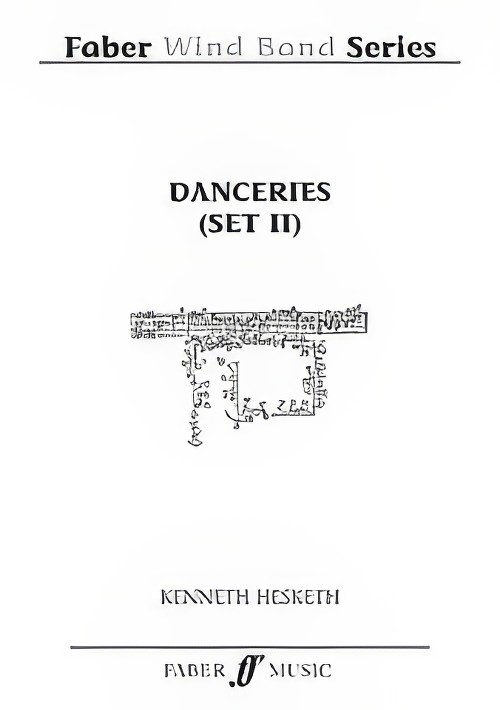 £125.00
£125.00Danceries (Set II) (Concert Band - Score and Partss) - Hesketh, Kenneth - Littlemore, Phillip
Danceries Set II was commissioned by Keith Allen and Birmingham Symphonic Winds, supported by PRS for Music Foundation and the RVW Trust. The world premi?re of this work was given by Birmingham Symphonic Winds, conducted by Keith Allen, at the CBSO Centre, Birmingham in 2011. This second set of Danceries continues the format established in Danceries (Set I), namely in using material taken from Playford's Dancing Master, a collection of folk and popular tunes published in the seventeenth century, to form the basis of an extended dance suite. In this set, the melodies have been more abstracted and project only a distant echo of their original forms, but as before, each movement is self-contained, colourful and direct, with its own distinct mood. The outer movements - Jennie's Bawbee and Peascod's Galliarda - share a use of driving percussion writing with a military air. Tom Tinker's Toye and Heart's Ease (movements two and three) are both settings of original melodies. All movements are more extended than in the first set, with a freer use and approach to the material; melodies now occur in various keys and are supported by a greater variety of harmonic colouring. The result is a richer, even more exhilarating set of dances. Danceries has come of age! Duration: 15.00
Estimated dispatch 7-14 working days
-
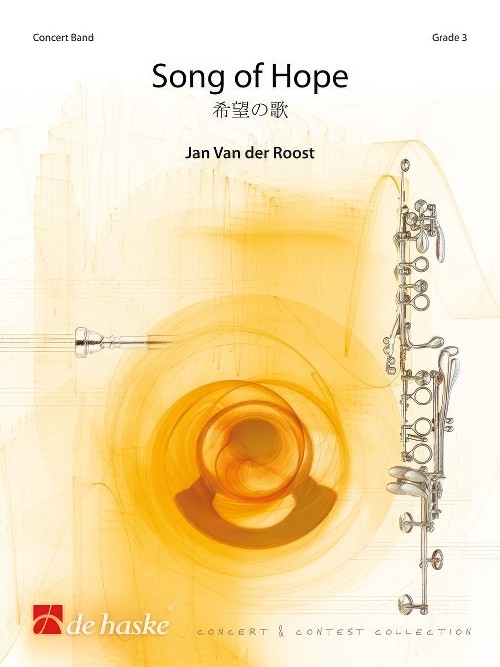 £104.99
£104.99Song of Hope (Concert Band - Score and Parts) - Van der Roost, Jan
2011 was a disastrous year for Japan: on March 11 the northeast of the country suffered a violent earthquake, which triggered a huge tsunami and caused massive damage to people and the environment. The ensuing problems with the nuclear reactor at Fukushima only increased the misery: a black day in the country's history... One almost inevitable consequence of such dramatic circumstances is the particular damage suffered by the cultural arts. And so it was in Japan: various high school wind orchestras in the effected areas lost their practice rooms and/or instruments. It will take a long time before the damage suffered is repaired - and it will take great effort to overcome the psychological effects, too. Focusing on the latter, Yutada Nishida (director of The Bandwagon radio program) asked a few composers for a simple work that could be played by many orchestras. It just so happened that the Osakan Philharmonic Winds (with whom Jan Van der Roost had conducted a concert exclusively of his own works on September 25th) had had a similar idea. This concert saw the baptism of Song of Hope. This piece immediately struck a chord with musicians and audience alike: it begins bleakly in the low register and evolves to a more open, optimistic close. There really is hope for better times!Duration: 4:45
Estimated dispatch 7-14 working days
-
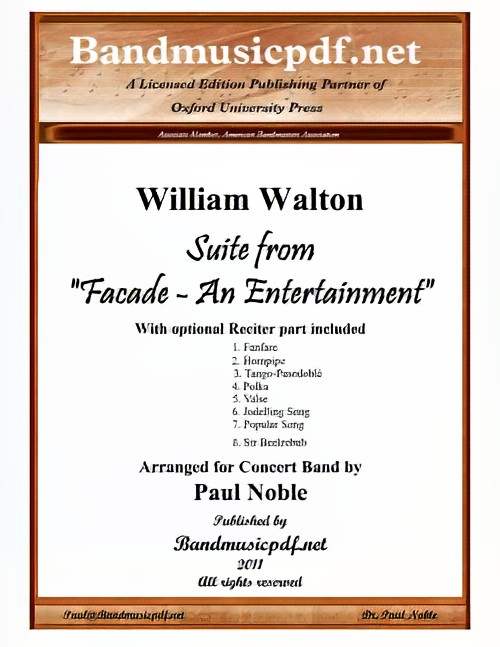 £375.00
£375.00Facade - An Entertainment, Suite from (Concert Band with Optional Narrator - Score and Parts) - Walton, William - Noble, Paul
This Suite from Facade - An Entertainment, composed by William Walton, with poems by Dame Edith Sitwell, presents for the first time a grouping of movements selected and arranged by Paul Noble for Concert Band and optional Reciter. The original composition was written between 1921 and 1928, containing forty-three numbers. They had their origin in a new style of poetry that Edith Sitwell evolved in the early 1920s, poems that her brother Osbert later described as 'experiments in obtaining through the medium of words the rhythm and dance measures such as waltzes, polkas, foxtrots... Some of the resulting poems were sad and serious... Others were mocking and gay... All possessed a quite extraordinary and haunting fascination.' Possibly influenced by the dance references in some of the numbers, Osbert declared that the poems might be further enhanced if spoken to a musical accompaniment. The obvious choice of composer was the young man who lived and worked in an attic room of the Sitwell brothers' house in Carlyle Square W[illiam] T[urner] Walton, as he then styled himself. The now historic first performance of the Facade Entertainment took place in an L-shaped first-floor drawing-room on January 24, 1922. Accompaniments to sixteen poems and two short musical numbers were performed by an ensemble of five players. The performers were obscured from the audience by a decorated front curtain, through which a megaphone protruded for Edith to declaim her poems. This was, as she put it, 'to deprive the work of any personal quality'. The first public performance of Facade was given at the Aeolian Hall on June 12, 1923. By now, fourteen poems had been set, others revised or rejected, and an alto saxophone added to the ensemble. The occasion gave rise to widespread publicity, both pro and contra, and the name of the twenty-one year old W. T. Walton was truly launched. In the ensuing years the Facade has gone through revisions and additions, with full orchestral arrangements of selected movements being made without the Reciter. Former Band Director Robert O'Brien arranged some movements for band, again without Reciter, which are now out of print. So this 'history making' addition is the first opportunity for Concert Bands to present some movements of Facade with poems as originally intended. The luxury of electronic amplification allows the full ensemble to perform without necessarily overshadowing the Reciter. And the arrangements are written with considerable doubling so that the ensemble may play in full, or reduced in size as may be desired for proper balance. And, though not encouraged, the arrangements are written so that the band can perform the music without the Reciter. Program notes are adapted in part from those written by David Lloyd-Jones and published by Oxford University Press in the Study Score of William Walton's Facade Entertainments.
Estimated dispatch 7-14 working days
